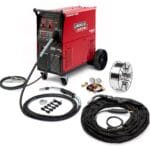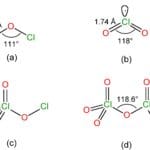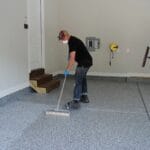Got a metal whatchamacallit that’s seen better days? Before you consign it to the scrap heap, consider the power of Loctite Epoxy Weld. This isn’t your everyday glue; it’s a two-part epoxy that forms a bond so strong, it’s often compared to a weld. This comprehensive guide dives deep into Loctite Epoxy Weld—what it is, its uses, and how it can rescue your broken metal treasures. From patching a leaky toolbox to tackling more demanding repairs, we’ll cover it all. We’ll even explore how it stacks up against traditional welding and other adhesives. So, grab your tools (and maybe a marbled cellar spider for company) and let’s get fixing!
Understanding Loctite Epoxy Weld
What is Loctite Epoxy Weld?
Loctite Epoxy Weld is a two-part system—a resin and a hardener—that, when mixed, creates a powerful adhesive bond. Think of it as a molecular handshake, firmly gripping the surfaces together. This bond offers impressive resistance to impacts, chemicals, and the test of time. It might not replace welding in every scenario, but it’s a remarkably strong and versatile solution for many metal repairs.
What is Loctite Epoxy Weld Used For?
This versatile compound shines in various applications, from mending household items to tackling automotive repairs. It’s compatible with a range of metals, including aluminum, steel, iron, copper, and brass. Think cracked engine blocks, broken tool handles, leaky pipes, or even reinforcing structural elements. It’s also surprisingly effective on other materials like ceramic and some plastics, broadening its utility for diverse projects.
Here are some examples of common uses:
- Automotive Repair: Patching holes in gas tanks (with proper precautions), repairing cracked engine blocks, reattaching mufflers.
- Household Repairs: Fixing broken appliances, mending furniture, securing loose handles and hinges.
- DIY Projects: Reinforcing joints in metal structures, creating custom metalwork, repairing garden tools.
- Industrial Applications: Securing machinery components, repairing pipes and tanks, bonding metal parts in manufacturing.
Loctite Epoxy Weld often serves as a viable alternative to traditional joining methods like welding, soldering, or bolting. While not as strong as a weld in all applications, its ease of use and portability make it a winner for many situations.
Advantages of Using Loctite Epoxy Weld
Loctite Epoxy Weld offers several benefits that make it a must-have for any DIY enthusiast or professional:
- Ease of Use: No specialized training or equipment is needed, unlike welding. Simply mix and apply.
- Versatility: Works on a wide range of metals and some other materials.
- Strength: Provides a strong and durable bond that can handle impacts, vibrations, and chemicals.
- Fast Setting: Reduces downtime for repairs.
- Cost-Effective: More affordable than welding, especially for small repairs.
- Portability: Take it anywhere—no bulky equipment required.
Choosing the Right Loctite Epoxy Weld
Navigating the Loctite Epoxy Weld Family
Loctite offers a variety of epoxy weld products tailored for specific needs. For general-purpose repairs, the standard Loctite Epoxy Weld (often found in a syringe for easy mixing) is a solid choice. For more demanding applications, explore specialized formulations like Loctite Super Steel Epoxy, designed for high-strength bonding, or specific formulations for plastic repair. Pay close attention to product numbers (e.g., 3450, 1360700) to ensure you select the correct product for your project. Sizes also vary, from small syringes to larger tubes, allowing you to purchase the right quantity for the job.
Where to Buy Loctite Epoxy Weld
You can find Loctite Epoxy Weld at most hardware stores, automotive parts stores, and online retailers like Amazon, Lowe’s, Home Depot, JB Tools, Zoro, Walmart, and eBay. When purchasing online, double-check the product number to ensure it matches your requirements.
Applying Loctite Epoxy Weld Like a Pro
Surface Preparation is Key
Clean the surfaces thoroughly, removing any rust, grease, paint, or debris. A slightly roughened surface, achieved with light sanding, improves adhesion. For optimal results, consider using a metal primer before applying the epoxy.
Mixing and Application
Mix the resin and hardener in equal amounts, following the instructions on the package. Ensure a uniform color, indicating thorough mixing. Apply a thin, even layer of the mixed epoxy to both surfaces you intend to bond.
Clamping and Curing
For stronger bonds, clamp the pieces together securely. This ensures consistent contact while the epoxy cures. Allow sufficient curing time, typically 24 hours, as directed on the product packaging. Warmer temperatures generally speed up curing, while cooler temperatures slow it down.
Finishing Touches
Once cured, the epoxy can be sanded, drilled, or painted, seamlessly blending the repair with the original material.
Safety First
Always work in a well-ventilated area and wear gloves to protect your skin. Eye protection is also recommended.
Loctite Epoxy Weld vs. the Competition
Loctite Epoxy Weld vs. Other Adhesives
While many adhesives exist, Loctite Epoxy Weld stands out for its combination of strength, durability, and ease of use. Compared to other epoxies, it often exhibits superior chemical and impact resistance, making it suitable for more demanding applications. However, specialized adhesives, such as plastic bonders, may be more appropriate for specific materials. Always check product specifications for compatibility.
Loctite Epoxy Weld vs. Welding
While Loctite Epoxy Weld offers impressive strength, it doesn’t always match the sheer permanence of welding, especially in structural applications. Welding fuses metal together, creating an exceptionally strong and integrated bond. This makes welding the preferred method for applications involving heavy loads or constant stress.
| Feature | Loctite Epoxy Weld | Welding |
|---|---|---|
| Strength | High, but application-dependent | Generally higher, especially for structural applications |
| Permanence | Strong, but can degrade under extreme conditions | Extremely permanent |
| Ease of Use | Very easy | Requires specialized training and equipment |
| Versatility | Excellent for various metals and some other materials | Primarily for metals, limited by material compatibility |
| Cost | Lower | Higher due to equipment |
| Safety | Easier to manage; fewer hazards | Requires significant safety precautions |
Loctite Epoxy Weld excels where welding is impractical or undesirable, such as near flammable materials or in situations requiring portability. It’s a safer and often more convenient alternative for smaller repairs and DIY projects.
Understanding Epoxy Strength
What is the Strongest Bonding Epoxy?
The “strongest” epoxy depends on the specific type of strength required. Tensile strength resists pulling forces, shear strength handles sideways pressure, peel strength prevents peeling, and impact strength withstands sudden shocks. Different epoxies excel in different areas. Select an epoxy based on your project’s demands. Look for products that meet ASTM or ISO testing standards for reliable performance data.
Types of Epoxy
One-part epoxies are convenient for quick fixes, curing with air moisture. Two-part epoxies, while requiring mixing, deliver superior strength and versatility for more demanding projects.
Factors Affecting Epoxy Bond Strength
- Surface Preparation: Thorough cleaning and roughening are crucial. Primers further enhance adhesion.
- Curing Process: Follow product instructions for curing time and temperature.
- Epoxy Selection: Choose the right epoxy for the materials and application.
Tips and Tricks for Success
- Test before committing: Try the epoxy on a scrap piece of the same material to ensure compatibility and proper adhesion.
- Use the right tools: Mixing sticks, applicators, and clamps can greatly improve the application process.
- Work in a controlled environment: Avoid extreme temperatures and humidity during application and curing.
- Consider reinforcing the bond: For structural repairs, consider adding mechanical fasteners (screws, bolts) along with the epoxy.
- Don’t over-clamp: Excessive pressure can squeeze out too much epoxy and weaken the bond.
- Practice makes perfect: Like any skill, working with epoxy takes practice. Start with small projects to gain experience.
By following these guidelines and understanding the specific properties of Loctite Epoxy Weld, you can achieve professional-grade metal repairs with confidence. Remember to always consult the product instructions and prioritize safety.
Frequently Asked Questions (FAQ)
Q: How long does Loctite Epoxy Weld take to cure? A: Most formulations set within minutes but require 24 hours to reach full strength. Consult the product instructions for specific curing times.
Q: Can I use Loctite Epoxy Weld on plastic? A: While primarily designed for metal, some Loctite epoxy formulations work on certain plastics. Always check the product specifications for compatibility.
Q: Is Loctite Epoxy Weld waterproof? A: Most Loctite Epoxy Weld formulations offer good water resistance but may not be entirely waterproof. Check the specific product information for details.
Q: How do I remove cured Loctite Epoxy Weld? A: Removing cured epoxy is challenging. Mechanical methods like sanding or scraping are often necessary. Heat can also soften the epoxy, making it easier to remove.
Conclusion
Loctite Epoxy Weld provides a powerful and versatile solution for a wide range of metal repair needs. Whether you’re a seasoned DIYer or just starting, understanding its capabilities and proper application techniques will empower you to tackle projects with confidence. While it may not replace welding in all scenarios, its ease of use, versatility, and strong bonding properties make it an indispensable tool for any toolbox. Just remember to consult the NEC Table 310.16 if you’re dealing with electrical projects involving metal components!
- Unlock Water’s Symbolism: A Cross-Cultural Exploration - April 20, 2025
- Identify Black and White Snakes: Venomous or Harmless? - April 20, 2025
- Unlocking Potential: Origins High School’s NYC Story - April 20, 2025















